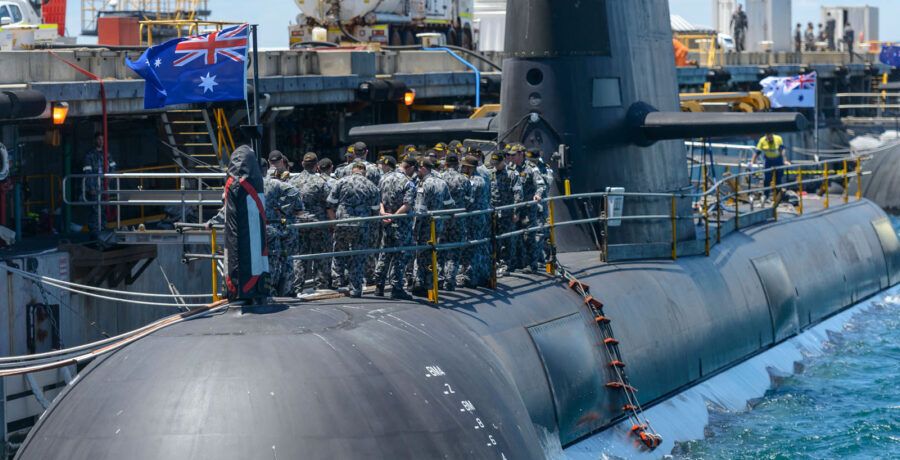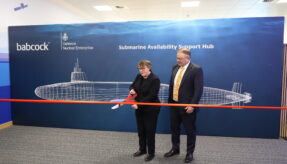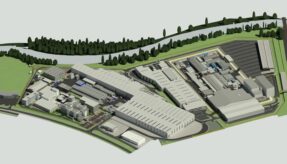
A UK-led design has been chosen for the first generation of AUKUS nuclear submarines that will be built in the UK and Australia.
The new fleet of submarines will be in operation by the late 2030s following a massive, trilateral building project which will create thousands of jobs in the UK.
The AUKUS partnership was announced in September 2021, which has seen the UK, Australia and the United States of America working together to support Australia to acquire a conventionally-armed, nuclear-powered submarine or ‘SSN’.
Following an 18-month scoping period to establish the optimal pathway to Australia acquiring this capability, a model has been chosen based on the UK’s world-leading design and incorporating cutting-edge US submarine technology.
Australia and the UK will both build new submarines to this design, known as ‘SSN-AUKUS’, with construction of the UK’s submarines taking place principally in Barrow-in-Furness. Australia will work over the next decade to build up its submarine industrial base, and will build its submarines in South Australia with some components manufactured in the UK.
The SSN-AUKUS submarines will be the largest, most advanced and most powerful attack submarines ever operated by the Royal Navy, combining world-leading sensors, design and weaponry in one vessel.
This massive multilateral undertaking will create thousands of jobs in the UK in the decades ahead, building on more than 60 years of British expertise designing, building and operating nuclear-powered submarines. As the home of British submarine building, most of these jobs will be concentrated in Barrow-in-Furness with further roles created elsewhere along the supply chain, including in Derby.
Choosing an interoperable submarine design will allow the Royal Navy, with its Australian and US counterparts to work together to meet shared threats and deter aggression. This includes in the Indo-Pacific where the refresh of the UK’s Integrated Review has confirmed the importance of increased engagement in this febrile region. The strategy confirms the Indo-Pacific ‘tilt’ as a permanent pillar of the UK’s international policy.
The Prime Minister said: “The AUKUS partnership, and the submarines we are building in British shipyards, are a tangible demonstration of our commitment to global security.
“This partnership was founded on the bedrock of our shared values and resolute focus on upholding stability in the Indo-Pacific and beyond.
“And I am hugely pleased that the plans we have announced today will see pioneering British design expertise protect our people and our allies for generations to come.”
Construction will start on the UK’s SNN-AUKUS submarines towards the end of this decade. Decisions about how many submarines the UK requires will be made in the coming years, based on the strategic threat picture at the time. The UK’s SSN-AUKUS submarines will be built by BAE Systems and Rolls-Royce. Once they are operational, the UK’s new SSN-AUKUS submarines will replace the current Astute-Class submarines.
The Defence Secretary said: “This is a significant step forward for our three nations as we work together to contribute to security in the Indo-Pacific and across the world.
“Supporting thousands of jobs across the UK, with many in the north-west of England, this endeavour will boost prosperity across our country and showcase the prowess of British industry to our allies and partners.”
To deliver the new submarines by the earliest possible date, Royal Australian Navy personnel will be embedded in the Royal Navy and US Navy, and – subject to necessary arrangements – at British and American submarine industrial bases, by the end of this year. This process will accelerate the training of Australian personnel required for them to operate a submarine fleet.
US submarines will also increase port visits to Australia from this year with the UK increasing visits from 2026. British and American SSNs will make longer term deployments to Australia from as early as 2027 to accelerate the development of Australia’s workforce, infrastructure and regulatory system.
As part of the agreement, to fulfil Australia’s need for a nuclear-powered submarine until the SSN-AUKUS is operational, the US intends to sell Australia a number of Virginia-Class submarines in the 2030s.
The approach taken on the AUKUS programme has included extensive engagement with the International Atomic Energy Agency, with all countries committed to developing an approach which protects classified information and strengthens the global non-proliferation regime.
Babcock International Group (Babcock) has welcomed the announcement from the Australian, United Kingdom and United States Governments regarding the optimal pathway for acquisition of nuclear-powered submarines under the AUKUS pact.
Babcock CEO David Lockwood said: “Babcock plays a critical role in all three countries’ submarine programmes today. Our experience of nuclear infrastructure, workforce upskilling, and regulatory and safety stewardship means we are ideally positioned to help deliver a nuclear-powered submarine capability for the Royal Australian Navy under the AUKUS agreement.”
“Babcock has a proven track record for managing complex assets in highly regulated environments. Owning and operating the UK’s only licensed facility for refitting, refuelling and defueling nuclear submarines, Babcock sustains the entirety of the Royal Navy’s nuclear-powered submarine fleet, including the delivery of through-life support and life extension of the Vanguard, Trafalgar, and Astute Submarine Classes.
“As the premier warship sustainment company in Australia and New Zealand, underpinned by our global experience, Babcock stands ready to help grow Australia’s local industrial capability to support the acquisition and operation of the new submarine fleet – helping to keep Australasia safe and secure”.








